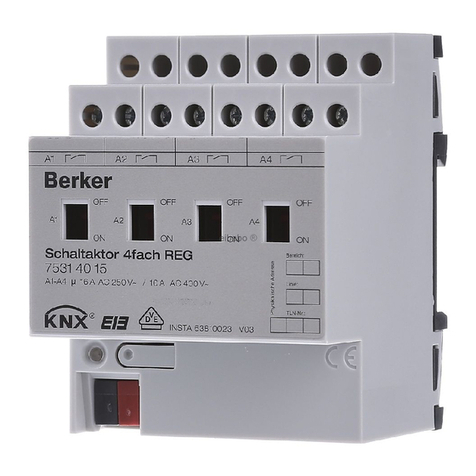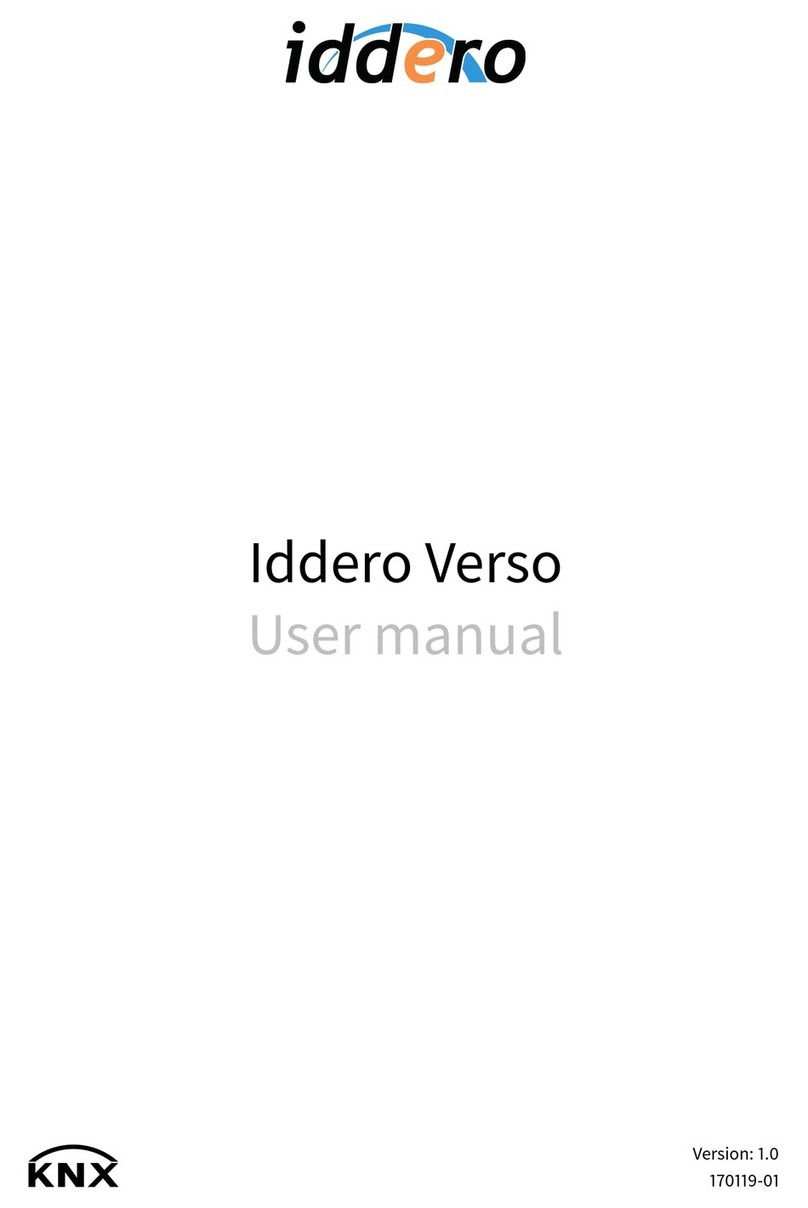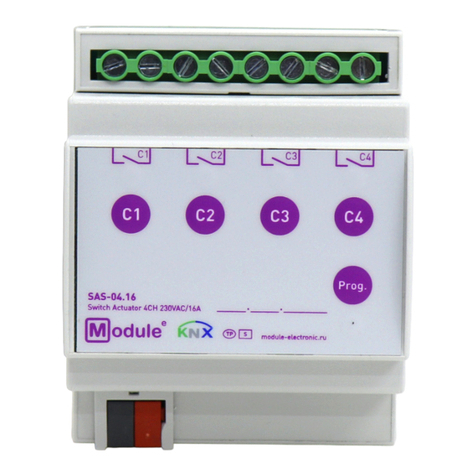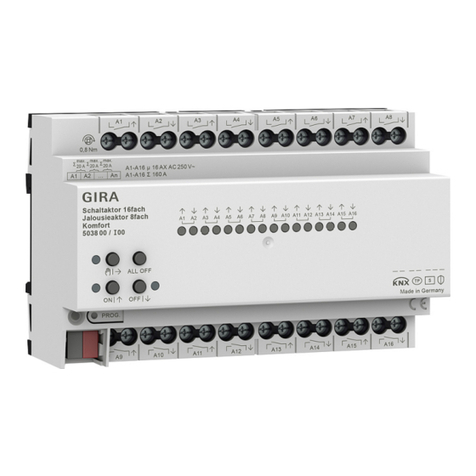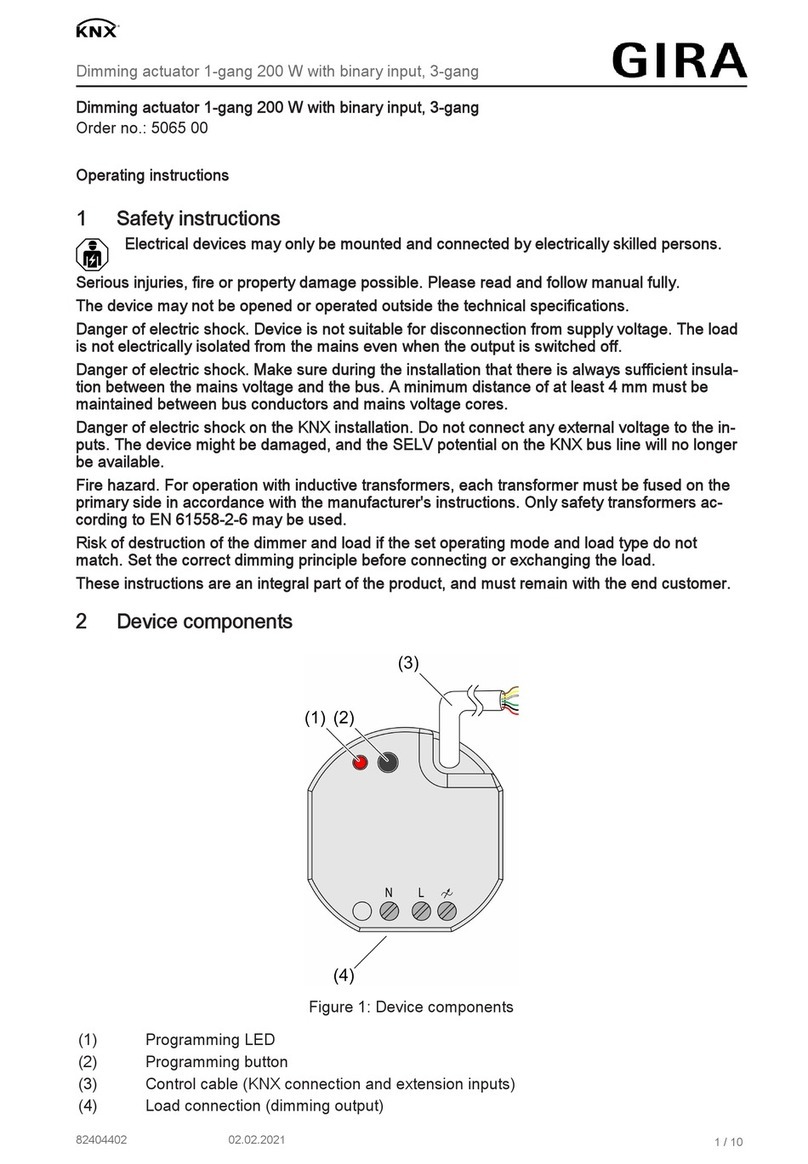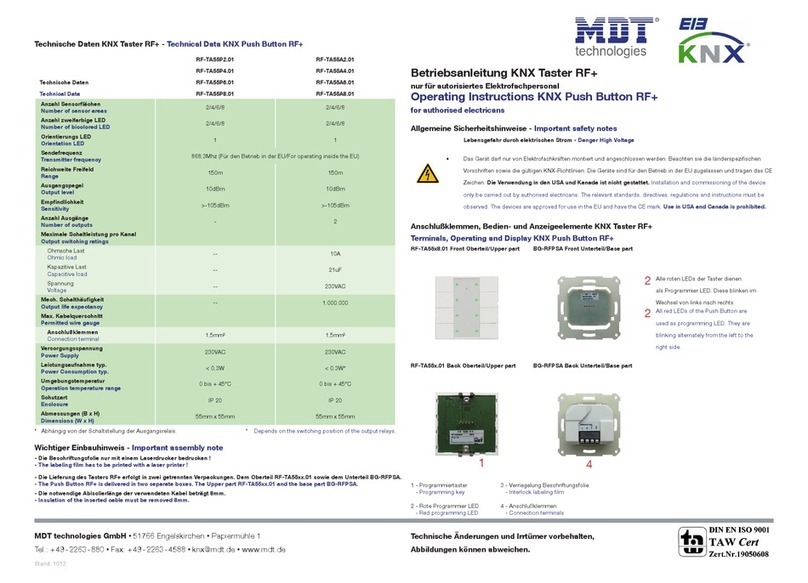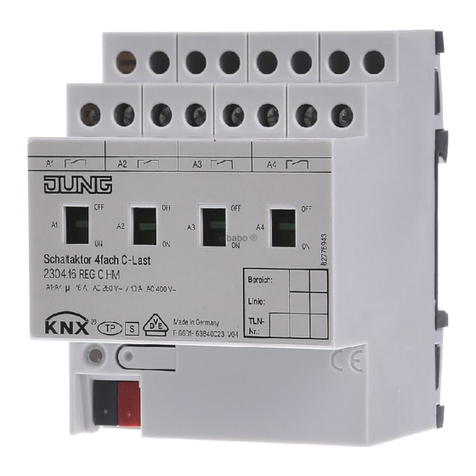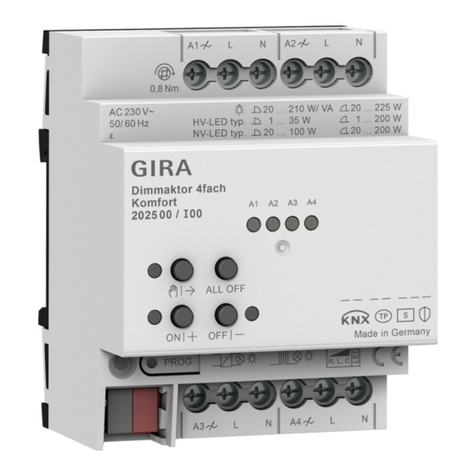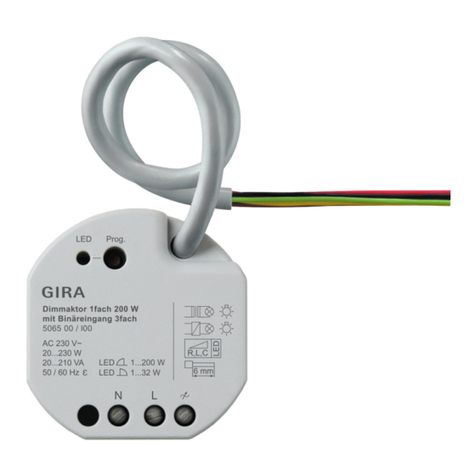
Switch actuator, 1-gang
■ Load physical address and application program using the ETS.
Safe-state mode
The safe state mode stops the execution of the loaded application program.
Only the system software of the device is still functional. ETS diagnosis functions and pro-
gramming of the device are possible.
Activating the safe-state mode
■ Switch off the bus voltage or disconnect the device from the KNX.
■ Wait about 10 s.
■ Press and hold down the programming button.
■ Switch on the bus voltage or connect the device to KNX. Release the programming button
only after the programming LED starts flashing slowly.
The safe-state mode is activated.
With a new brief press of the programming button, the programming mode can be
switched on and off as usual also in the safe-state mode. If Programming mode is active,
the programming LED stops flashing.
Deactivating safe-state mode
■ Switch off bus voltage (wait approx. 10 s) or carry out ETS programming.
Master reset
The master reset restores the basic device setting (physical address 15.15.255, firmware re-
mains in place). The device must then be recommissioned with the ETS.
During secure operation: A master reset deactivates device security. The device can then be re-
commissioned with the device certificate.
Performing a master reset
Precondition: The safe-state mode is activated.
■ Press and hold down the programming button for > 5 s.
The programming LED flashes quickly.
The device performs a master reset, restarts and is ready for operation again after ap-
prox. 5 s.
Restoring the device to factory settings
Devices can be reset to factory settings with the Jung ETS Service App. This function uses the
firmware contained in the device that was active at the time of delivery (delivery state). Restor-
ing the factory settings causes the devices to lose their physical address and configuration.
5 Technical data
Ambient conditions
Ambient temperature -5 ... +45 °C
Storage/transport temperature -25 ... +70 °C
Dimensions (W × H × D) 48 x 50 x 28 mm
KNX
KNX medium TP256
Commissioning mode S-mode
Rated voltage KNX DC 21 ... 32 V SELV
Current consumption KNX 5 ... 18 mA
Connection mode KNX Connection terminal on control cable
Outputs
6 / 8
82404313 25.05.2021
J0082404313
